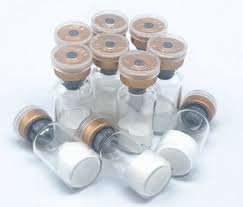
- +86-13363869198
- weimiaohb@126.com

Nov . 11, 2024 00:40 Back to list
Synthesis and Applications of Diethyl Phenylacetylmalonate in Organic Chemistry
Diethyl(Phenylacetyl)malonate A Key Compound in Organic Synthesis
Diethyl(phenylacetyl)malonate, with the chemical structure C14H16O5 and CAS number 20320-59-6, is a versatile compound in the realm of organic chemistry. It is a member of the malonate family, characterized by its unique structure that incorporates both a diethyl moiety and a phenylacetyl group. This combination not only gives rise to its distinctive properties but also highlights its utility in various synthetic applications, especially in the pharmaceutical and agrochemical industries.
Structure and Properties
Diethyl(phenylacetyl)malonate consists of a malonate backbone flanked by two ethyl groups and a phenylacetyl group. The malonate core is known for its reactivity in nucleophilic substitutions, making it an ideal candidate for a wide range of chemical transformations. The presence of the phenylacetyl group adds an aromatic character, which can influence the compound's interaction with biological targets, enhancing its potential as a drug candidate or pesticide.
The compound exhibits moderate solubility in organic solvents such as ethanol and dichloromethane, while being relatively insoluble in water. This solubility profile is advantageous for laboratory manipulations and synthetic applications where organic solvent usage is prevalent.
Synthesis
The synthesis of diethyl(phenylacetyl)malonate can be achieved through various pathways, typically involving the reaction of malonic acid derivatives with phenylacetyl chloride in the presence of an appropriate base. The reaction yields the diethylester form, which is more convenient for further modifications and applications. The process is relatively straightforward and can be conducted under mild conditions, making it accessible for synthetic organic chemists.
One of the appealing aspects of using diethyl(phenylacetyl)malonate in organic synthesis is its role as a versatile building block. Due to its malonate structure, it can undergo various transformations, including alkylation, acylation, and condensation reactions. These properties allow chemists to introduce a diverse array of functional groups, facilitating the formation of complex molecules.
diethyl(phenylacetyl)malonate cas 20320-59-6

Applications
Diethyl(phenylacetyl)malonate has garnered attention for its applications in drug discovery and development. Its structural attributes position it as a worthy candidate for the synthesis of pharmaceutical compounds. For instance, modifications to the phenylacetyl group can lead to new derivatives with enhanced biological activity, potentially yielding antihypertensive, anti-inflammatory, or antidiabetic agents.
In the agrochemical sector, the compound can also be explored as a precursor for developing novel herbicides and pesticides. The strategic incorporation of the phenylacetyl moiety may lend additional biological activity or improve the selectivity of target compounds, addressing the growing demand for effective and environmentally friendly agricultural chemicals.
Biological Activity
Preliminary studies have suggested that diethyl(phenylacetyl)malonate and its derivatives may exhibit interesting biological properties. For instance, certain derivatives have shown promise in inhibiting specific enzymes or pathways involved in diseases. This has sparked interest in exploring the compound further within medicinal chemistry, as modifications might enhance its efficacy and reduce potential side effects.
Conclusion
In conclusion, diethyl(phenylacetyl)malonate (CAS 20320-59-6) represents a significant compound in the landscape of organic synthesis. Its unique structure, coupled with its capacity for undergoing various transformations, makes it a valuable building block in creating complex organic molecules. As research continues to unveil its potential applications in pharmaceuticals and agrochemicals, diethyl(phenylacetyl)malonate stands as a testament to the importance of structural diversity in organic compounds and their impact on various industries. The ongoing exploration of its derivatives may lead to valuable advancements in drug discovery and agricultural chemistry, solidifying its relevance in modern science.
-
GHRP-2 (158861 67 7) Peptides for Fat & Muscle Gain
NewsAug.06,2025
-
GS-441524 for White Liquid Factories: Boost Efficiency & Purity
NewsAug.04,2025
-
Premium Pharma Intermediates | AI-Optimized Synthesis
NewsAug.03,2025
-
GS-441524 White Liquid Production for Factories | AI-Optimized
NewsAug.02,2025
-
AI-Optimized CAS: 79099-07-3 Factories for High Yield
NewsAug.01,2025
-
Pharmaceutical Intermediates - AI-Optimized Synthesis & Purity
NewsJul.31,2025